Products You May Like
Get full access to Outside Learn, our online education hub featuring in-depth fitness, nutrition, and adventure courses and more than 2,000 instructional videos when you sign up for Outside+
Sign up for Outside+ today.
I like to think I’m a pretty strong person. My DNA bequeathed me with muscular legs and years of figure skating and skiing developed more than just junk in the trunk. I work out regularly. But ask me to hold a one-minute kneeling side plank, and I fold like a house of cards. Considering that a kneeling side-plank is supposed to be an easier modification of an extended side plank, this is worrisome.
I first realized that side planks are my kryptonite during rehab sessions following ACL reconstruction. This is a go-to move for patients just a few weeks out from knee surgery because a) you can perform this move on one side while your leg is still in a locked-out brace and b) because a strong hip complex is one of the keys to knee injury prevention and rehabilitation.
Related: Everything You Need to Know About Skiing and Your ACL
When I couldn’t comfortably hold a modified side plank for more than 15 seconds, it pointed to a serious strength deficiency in the muscles surrounding my hips—little-known muscles with Latin names as well as the better-known glute muscles, which are also part of the hip complex. I can hold an extended side plank without issue, because I rely on my strong legs to keep me up. But take my legs out of the equation and isolate the hip muscles in a kneeling side plank, and it’s game over.
Related: Your most pressing ACL questions answered
Take it from me, someone who’s had three ACL reconstructions: This type of strength imbalance between your leg muscles and your hip muscles is bad news for your knees. If you’re putting in the time at the gym to build up your strength for ski season, make sure to dedicate time to your hip muscles as well as your legs. These six moves that focus on developing mobility and strength throughout the hip complex should help get you started.
Fire Dogs with Rotation
Equipment: Floor mat
- Get into a table-top position. From there, raise one leg with knee still bent to 90 degrees to hip level (like a dog at a fire hydrant). Be sure to keep back and neck long and flat and hips squared to the ground.
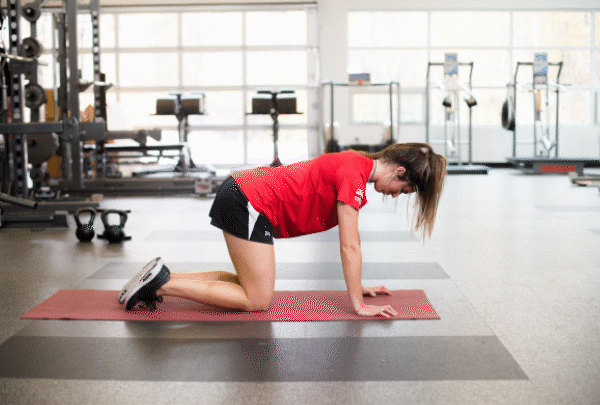
- From here, extend and straighten the bent leg by pushing the heel toward the back wall.
- Draw 10 small circles in the air in both directions with your extended leg.
- Return elevated leg to floor and repeat movement with other leg.
Clam Shells
Equipment: Looped resistance band
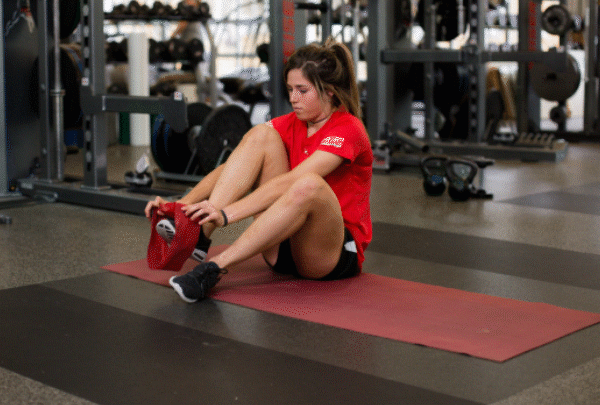
- Lying on your side, place a looped resistance band around both legs just below the knee.
- With your knees and hips at 90 degrees, keep one knee in contact with the floor, squeeze your glutes and raise the other knee up against the band to separate the knees like a clam shell.
- Hold at the top and repeat.
Banded Lateral Walks
Equipment: Looped resistance band
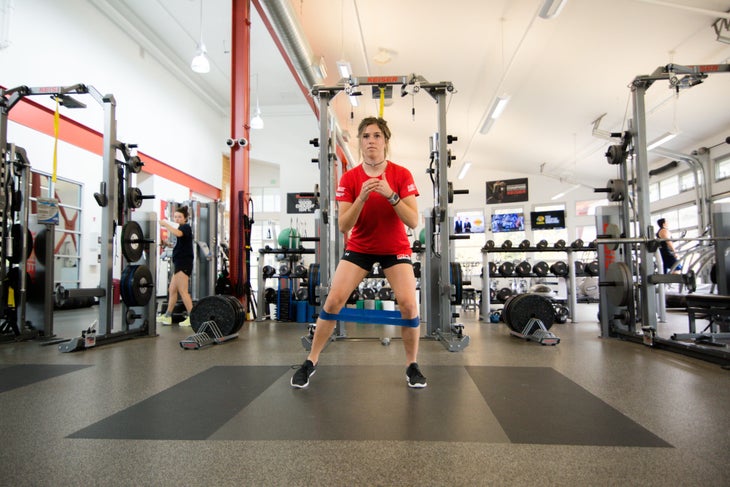
- With the band around both legs just below the knees, get in a basic athletic stance (feet hip-width apart, knees slightly bent), preferably facing a mirror for feedback.
- Take a large step laterally, then follow with a small step with the trailing leg. Focus on keeping hips and chest squared to front wall while moving laterally.
- Repeat for 6-10 steps in one direction, and then back with the other.
- Pro tip: To add challenge, sink into a squat while moving laterally. The lower you go and stay, the harder your hip and glute muscles will have to work.
Step-Ups
Equipment: Plyo box (or bench or step); dumbbells, kettlebells, or Olympic bar to add resistance (optional)
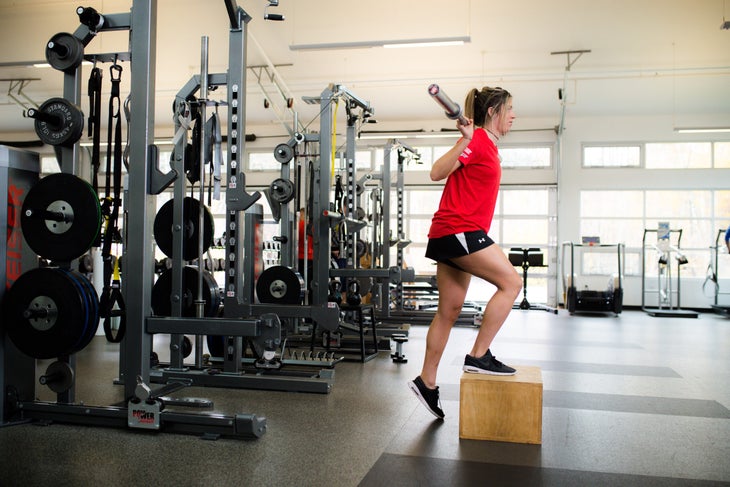
- Start in a standing position, about one foot in front of a plyo box.
- Step up onto the box with one leg.
- Push through the heel of the foot on the box to raise the body up and onto the box to a standing position on one leg.
- Slowly descend using the same leg and return to a standing position.
- Repeat with the other leg. For added resistance, perform step-ups with a weight in each hand.
Single-Leg Deadlift Step-Ups
Equipment: Plyo box (or bench or step); dumbbells
- This is a linking movement pattern putting two movements into one sequence.
- Start in a standing position, about one foot in front of plyo box, with a weight in each hand.
- Shift weight onto one leg and hinge at the hips to raise opposite leg up behind you and lower your chest towards the floor.
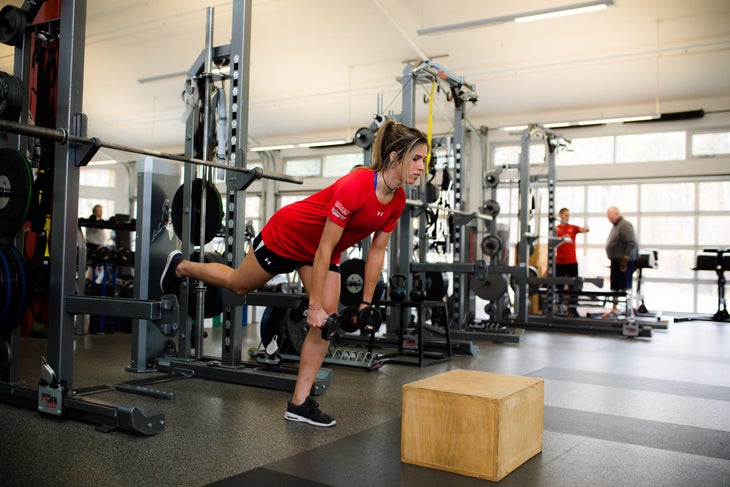
- Maintain a slight bend in the standing leg, but your upper body and extended leg should be a straight line.
- From here, lower back leg and swing it through to step up onto box. Balance on single leg for a beat, then step down to return to starting position.
- Repeat with other leg.
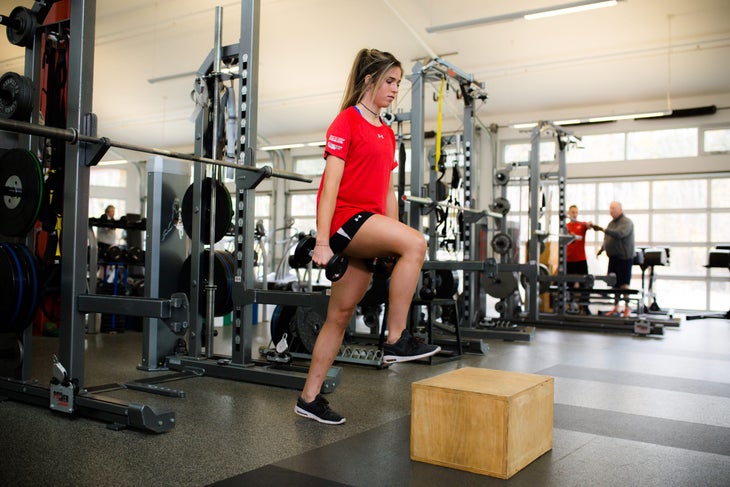
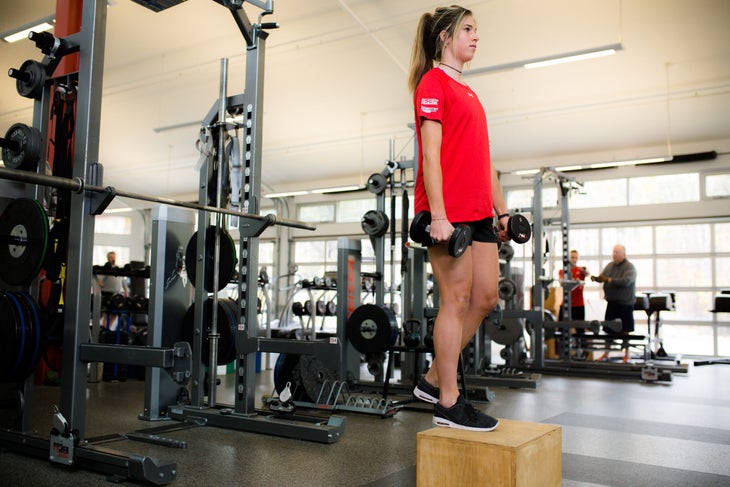
Hip Thrusts
Equipment: Heavy weight plate, dumbbell, or kettlebell
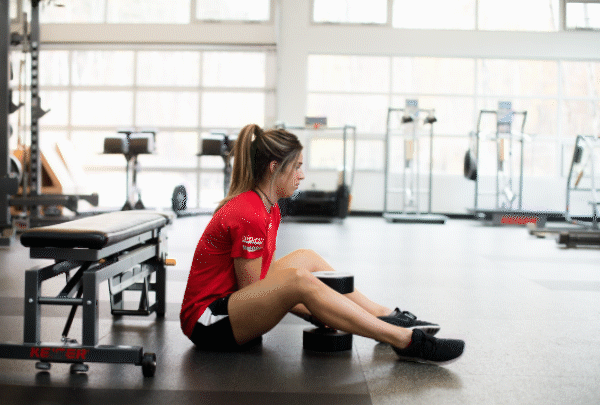
- With a dumbbell, plate or kettlebell in your lap, place your upper back against a bench or box while seated on the floor.
- Bend knees to 45 degrees.
- Push your upper back into the bench as you thrust your hips toward the ceiling to come into tabletop position.
- Slowly lower back to starting position, then repeat.
Looking for more training tips designed specifically for skiers? Check out SKI‘s Get Fit to Rip course on Outside Learn. The comprehensive online training plan was designed by former U.S. Ski Team strength and conditioning coach Chris Miller and features full workout videos that you can follow at home, no gym equipment required.
